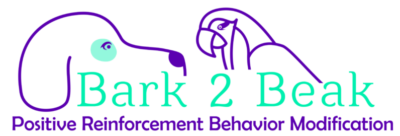
Managing Aggression
When an act of aggression occurs, 2 things happen very quickly.
- Our adrenaline spikes and our heart races.
- We either panic or franticly move into action.
Both of these events are crucial during an encounter. The first heightens our senses and at times can increase dexterity or movement, making us seem to move quicker or act faster. The second impacts what we are doing. In a panicked or frantic state we may scream or flail our arms about. In that same state we may thing to move our hands into area they shouldn’t or in worse cases, our flight instinct may kick in and we try to run.
Reactivity is an information seeking strategy.
Leslie McDevitt
Spray Shield is a citronella based deterrent. The smell is not appealing to dogs and can spray in a stray line about 20 feet away. The wound care can get similar distance, but is only saline. So it can only deter for a brief time.
My hope is to increase safety in my clients when addressing situations like this. With years of experience under my belt, I would still say there is no cookie cutter method in what to do. I will say there are some things we can do that can aid us in preventing situations like this. Several items are helpful in protecting yourself and your pet during unexpected and potentially dangerous encounters. Products like Spray Shield or an Air Horn can be used to deter an animal from coming closer to you or your pet. These are two items I highly recommend having on you. If you live in an area that does not allow you to buy Air Horns, Pet Corrector can be an alternate. As an alternate to spray shield, I have found the Wound Care saline sprays to be mildly affective. I will say that both the Air Horn and Pet Corrector give an audible correction. This means that both your dog and the aggressing animal will be affected by it.
In the home, aggression can be even harder, as your safe space has now been violated. Whether it was your pet attacking another pet or your pet attacking you. Even cats that play rough and sneak up and attack their owners can have us checking corners when walking down the hallway. That safe space of our home is sacred and during sessions my hope is to help restore that. That said, some things you can do to help prevent issues in the home.
- Never put your hands in your pets food bowl are disrupt their eating (unless you are adding something yummy)!
- Do not put them in a forced state. Making your dogs do something they are uncomfortable with can increase the likelihood of a bite.
- Be sure they have a safe space they can retreat to that NO ONE bothers them (people or other pets).
- When it comes to the safety of children, do not let your child climb on, hit or grab at the dog. There is a good chance your dog doesn’t like it but doesn’t want to get in yelled out for saying so, especially if they were told to “stay”.
- Watch for signs of discomfort
- Tongue Flicking
- Usually does not lick entire mouth, just the edge of the nose.
- Head Turning
- This is your pet turning their head away from the stressor or orienting their body away.
- Tucked Tails or Lifted Paw
- Signs of discomfort that quickly tell you that your pet needs a reprieve.
- Yawning or Excessive Panting
- Both of these will happen out of the “ordinary”. They are panting but they are just laying still and not doing anything or hot. They are yawning but are not tired. Especially if there is a sudden change in the environment.
- Growling
- This is not a bad behavior! This is the nicest way your dog can say they need space and they need it quick!
- Tongue Flicking
This list is not all inclusive and there are plenty of signs and signals out there not on my small list. This is just a starting point to help you before scheduling an appointment. I want to help you be safe and knowing what your dog is saying is one of the best things we can do. Remember, growling isn’t bad and sometimes we miss the other signals. Gates, crates and leashes can also help to increase space and safety until you are able to get a professional to the home.
If you don’t know, ask. If you are unsure of what your pet is doing or what they are trying to portray, please ask us. The contact form on this site can be used to ask any number of questions and I generally respond quickly. If you would like to schedule a consultation, please use the link below.
